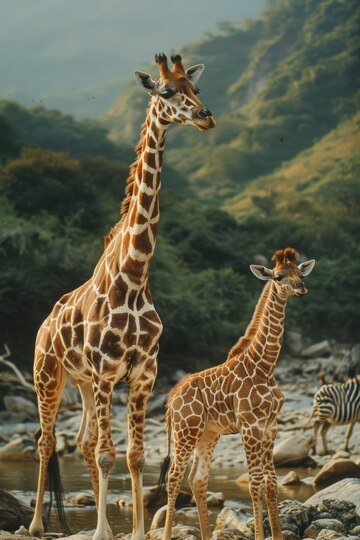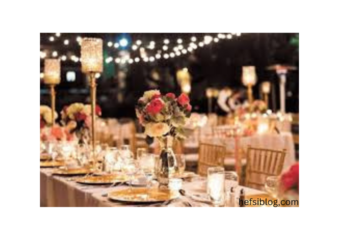Introduction to the Art of Zoo

The phrase “Art of Zoo” may evoke many thoughts and ideas for different people. In its essence, the Art of Zoo is the visual representation of animals in various forms of art, from paintings to sculptures and digital art. This unique artistic expression captures the beauty, majesty, and sometimes even the raw power of the animal kingdom. Artists have been inspired by animals for centuries, using them as a medium to express not just their physical appearance but their cultural and symbolic significance. The Art of Zoo is a tribute to wildlife, reflecting how animals have shaped human creativity and the world of art.
In this article, we will dive deep into the Art of Zoo, exploring its history, significance, and the many different ways it manifests in the modern and contemporary art world. We’ll look at famous artists known for their animal-centric works and how this genre has evolved with the times, especially in the digital age. By understanding the art of zoos, we can better appreciate the relationship between humans and animals, not only as subjects of admiration but as partners in the creation of visual masterpieces.
The art of the zoo has a rich history and evolution.
The fascination with animals has been a part of human culture since the earliest days of history. The Art of Zoo traces its roots back to prehistoric cave paintings, where early humans depicted animals as both symbols of survival and spiritual significance. These early renditions in places like Lascaux and Altamira caves are some of the earliest examples of the Art of Zoo in its most primitive form.
As civilizations advanced, so did the portrayal of animals in art. In ancient Egypt, animals such as cats, falcons, and jackals were not only depicted as sacred but were also used to symbolize gods and goddesses. Similarly, in Greco-Roman art, animals were commonly used to signify strength, wisdom, and sometimes mystery.
The Middle Ages and the Renaissance period witnessed a resurgence in the art of zoos. Artists like Albrecht Dürer and Leonardo da Vinci studied animals meticulously, infusing their works with realistic depictions. In their work, animals took on a new role—no longer just symbolic but as subjects of scientific and anatomical interest.
Fast forward to the 20th century, and the Art of Zoo evolved to include abstract interpretations of animals. Artists like Pablo Picasso and Franz Marc experimented with form and color to offer a new perspective on how animals are viewed in art.
The Symbolism Behind the Art of Zoo

When discussing the art of zoos, it’s important to understand the symbolism that animals often represent. In many cultures, animals are more than just creatures of the wild; they serve as metaphors for human qualities, divine attributes, and even psychological states.
Lions in the Art of Zoo often represent power, strength, and royalty. These majestic creatures are used in heraldry, ancient art, and modern logos as symbols of authority.
Birds can symbolize freedom and spiritual ascent, frequently used in the Art of Zoo to depict transcendence and peace.
Cats, known for their independence, are often associated with mystery, elegance, and curiosity.
Dogs, representing loyalty and companionship, appear prominently in family portraits and pastoral scenes in the Art of Zoo.
The versatility of animals in art makes them prime subjects for metaphorical exploration, and the Art of Zoo continues to play on this deep well of symbolism, making animal art an endlessly fascinating genre.
Forms of Art of Zoo in the Modern World
In the modern world, the art of zoo has expanded its horizons. No longer confined to traditional forms like painting and sculpture, the digital age has brought about new ways for artists to express their connection to animals. Let’s explore some popular forms of the Art of Zoo today:
1. Traditional paintings and sketches
Artists like John James Audubon, known for his lifelike depictions of birds, exemplify the traditional art of the zoo. Painters focus on the details of the animals, capturing their physical traits, movements, and environments.
2. Sculpture
Sculpture is another popular medium in the Art of Zoo, with famous artists like Auguste Rodin using animals to express emotion and form. Today, animal sculptures range from realistic bronze pieces to abstract, contemporary works.
3. Photography
Animal photography is one of the most modern expressions of the Art of Zoo. Photographers travel to far-off regions, capturing wildlife in their natural habitat. This branch of art brings viewers closer to the real lives of animals, providing an intimate look into the world of the Art of Zoo.
4. Digital Art
In today’s tech-driven era, digital artists have embraced the Art of Zoo by creating 3D models, animations, and even AI-generated animal art. Platforms like Instagram and DeviantArt are flooded with digital renditions of animals, showcasing the creativity and innovation that artists bring to the Art of Zoo.
5. Street Art and Murals
The Art of Zoo is also seen in street art and murals. Urban artists often use animals as symbols to convey social messages, whether it’s about environmental conservation or cultural identity.
How the Art of Zoo Impacts Society
The Art of Zoo is more than just a creative endeavor; it plays a significant role in raising awareness about wildlife conservation and the relationship between humans and nature. With the growing awareness of endangered species and habitat destruction, artists are using their platforms to advocate for the preservation of the animal kingdom.
Exhibitions that focus on the Art of Zoo often partner with wildlife charities, using proceeds to fund conservation efforts. Additionally, Art of Zoo pieces help educate the public about the beauty and fragility of our ecosystems.
Famous Artists in the Art of Zoo Genre
Several renowned artists have dedicated their careers to the art of zoos. Their works have inspired countless others to follow in their footsteps.
Franz Marc: Known for his bold use of color and form, Marc’s works often feature animals as a central subject, exploring their spiritual significance.
John James Audubon: A naturalist and painter, Audubon’s detailed bird studies are some of the most famous representations in the Art of Zoo.
Damien Hirst: While controversial, Hirst’s use of animals in formaldehyde jars has sparked discussions about life, death, and the role of animals in art.
FAQs About the Art of Zoo
1. What is the Art of Zoo?
The Art of Zoo refers to the depiction of animals in various forms of art, including painting, sculpture, photography, and digital media. It highlights the creative relationship between humans and animals.
2. Why is the art of the zoo important?
The Art of Zoo plays a vital role in cultural representation, conservation awareness, and the exploration of human-animal relationships. It’s an essential genre in the art world for its aesthetic and symbolic significance.
3. What are the different forms of art at the zoo?
The Art of Zoo can be seen in various forms, such as traditional paintings, sculptures, digital art, street art, and photography. Each form brings a unique perspective to how animals are viewed and appreciated.
4. How can the Art of Zoo help with wildlife conservation?
Many artists use the Art of Zoo to raise awareness about endangered species and the importance of wildlife conservation. Exhibitions and sales often contribute to conservation efforts, spreading awareness about the need to protect animals.
5. What are some famous examples of the art of the zoo?
Some famous examples include Franz Marc’s colorful animal paintings, Audubon’s detailed bird illustrations, and modern street art murals featuring animals as symbols of environmental activism.
Conclusion
The Art of Zoo continues to captivate audiences across the globe. From traditional depictions in ancient cultures to modern-day digital art, the portrayal of animals in art has evolved significantly. However, one thing remains constant: the timeless beauty and significance of animals in human creativity.
By understanding the art of zoos, we not only appreciate the aesthetic beauty of animals but also acknowledge their crucial role in our cultural, environmental, and spiritual lives. This genre of art, whether found in galleries, on the streets, or in digital spaces, continues to inspire, educate, and provoke thought.
The Art of Zoo isn’t just a celebration of animals; it’s a reminder of the profound connection between humanity and the natural world, a connection that must be preserved and cherished.
You can see lates updates on: thefsiblog



